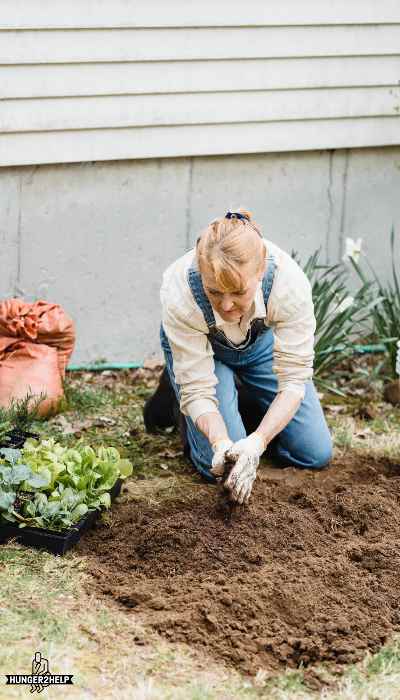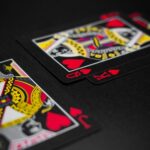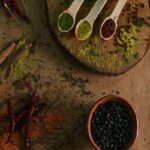Container gardening is a great way to grow plants in small spaces. It’s also a great way to learn how to garden, as well as an easy way to accomplish big goals like growing your own food or enjoying fresh herbs year-round. In this guide, we’ll discuss the basics of container gardening so that you can get started right away!

Container Gardening
Containment gardening is a simple and inexpensive way to get started. You can garden anywhere with containers. Add a container to a balcony, deck, or sidewalk, and you’re ready to go. There are a few steps you can follow and after that, you can start container gardening.
| 1. | Right Pot |
| 2. | Right Location |
| 3. | Right Soil |
| 4. | Right Fertilizer |
Choose the right pot
Choosing the right pot is an important step in planning your garden. You’ll want to consider these factors:
- The material that makes up the pot. A good pot should be made of either clay or plastic since these materials don’t absorb moisture as easily as others (like wood).
- The size of the pot. A large planter can accommodate more plants than a small one, so if you’re planting a lot of different kinds of plants, use something big!
- Shape and color. If possible, choose one with drainage holes; otherwise, water will build up inside causing root rot when it rains again later on down the line (or sooner!). Also, make sure there’s enough room around each plant so they don’t touch each other too much when growing together—they won’t get enough sunlight otherwise!
Choosing the right container for your plants is an important step in planning your garden. You’ll want to consider these factors: The material that makes up the pot. A good pot should be made of either clay or plastic since these materials don’t absorb moisture as easily as others (like wood). The size of the pot. A large planter can accommodate more plants than a small one, so if you’re planting a lot of different kinds of plants, use something big! Shape and color.
If possible, choose one with drainage holes; otherwise, water will build up inside causing root rot when it rains again later on down the line (or sooner!). Also, make sure there’s enough room around each plant so they don’t touch each other too much when growing together—they don’t need as much space to breathe and they’ll get plenty of sunlight, especially if you have multiple containers set up side-by-side.
Placement in or outdoors should be considered before anything else since the type of potting soil used should match the type of plants being grown. For instance, if you want to grow a tomato plant, use soil that is rich in nutrients like compost.
Select the right location for your container garden

- Select a location that gets at least 6 hours of sunlight per day. Sunlight is the most important factor in growing vegetables, so if you’re planning to grow your own food, it’s important to ensure that you have access to adequate sunlight throughout the year.
- Select a location sheltered from strong winds and rain. You’ll need some sort of protection from high winds and heavy rains during the rainy season (November through March), but also from extremely cold temperatures during the winter months (December through February). If possible, avoid locations where there will be snowfall or freezing temperatures for extended periods; these conditions could damage your plants’ roots or tissues if left unattended for long periods of time.
- It’s also important to note that not all parts of the country receive the same amount of sunlight. For example, regions that are located at higher altitudes typically have less direct sunlight and more cloud cover than those that are found closer to sea level.
- If you’re unsure of what types of plants can survive in your area, visit your local garden center or nursery to speak with one of their staff members. They can help guide you towards the right plants for your climate and environment.
Soil is the most important part of container gardening
Soil is the most important part of container gardening. Without good soil, your plants will not thrive and you won’t have any healthy-looking plants.
Soil is the foundation for all plant life, as it provides them with their nutrients in order for them to grow properly and flourish. If you’re new to gardening, you may not know what type of soil is best for your plants. In general, garden centers will sell pre-mixed soils that are suitable for container gardening. You also have the option of making your own by combining peat moss with compost or fertilizer.
The soil you use should be able to hold water, but also drain well. A good container mix should have a high percentage of peat moss, which acts as an absorbent for excess water and helps prevent root rot. It also contains nutrients that are beneficial for your plants’ growth.
Soil is a mixture of minerals, organic matter, air, and water. The three main components are sand, silt, and clay. Soils are also referred to as sandy, loam, or clay.
The different types of soil are based on their composition, drainage, and ability to hold water. Sandy soils contain a lot of sand particles and have good drainage qualities. They drain quickly but don’t hold much moisture. Loam soils are a combination of silt and clay with some organic matter added in.
They are often described as being “dirt” because they have good drainage capabilities and can retain moisture for long periods of time without becoming waterlogged. Clay soils contain mostly clay particles that form together into small clumps when wetted; however, they break apart easily when dry. They also have good water-holding capabilities, but they don’t drain well.
Avoid over-watering your plants

- Watering too much is a common problem, and it can cause problems for your plants. Over-watering causes root rot, which is a condition where the roots of your plant die and fall off. Rotting roots are not only unsightly for you but also for other people who may be in the same room as you when you water them!
- A simple way to avoid this problem is by using an automatic water system like a drip irrigation system or soaker hose that reaches down into the soil below your plant’s base (this means there are no exposed holes).
- If you have a small garden, it’s easy to manually water your plants. You can use a watering can or hose to spray the soil and keep it moist, but this takes time and effort. A better option is to use an automatic irrigation system that waters your garden at regular intervals throughout the day or night.
- When you’re using an automatic watering system, make sure it uses a timer or sensor to ensure that your plants are watered at regular intervals.
- If you’re using a hose, make sure it’s long enough so that you don’t have to move every time you want to water something new! This can help prevent accidents such as forgetting to turn on the water or leaving the hose running while walking away from it (this wastes water and makes lots of noise).
Use fertilizer to keep your plants healthy
If you want to keep your plants healthy, it’s important to fertilize them. Fertilizers can be purchased at a garden store or homemade and are used regularly in order to keep weeds under control and the soil healthy.
- Fertilizer: There are many different types of fertilizer on the market today. Some of these include fish emulsion, seaweed extract, kelp meal, and composted manure products. It is best practice not just stick with one kind of fertilizer but try out several different ones until you find what works best for your plant’s needs.
- There are many different types of fertilizer on the market today. Some of these include fish emulsion, seaweed extract, kelp meal, and composted manure products. It is best practice not just stick with one kind of fertilizer but try out several different ones until you find what works best for your plant’s needs. The type of fertilizer you use will depend on the needs of your plants.
- If you want to get the most out of your garden then it’s important to know what kind of fertilizer to use and when.
- There are many different types of fertilizer on the market today. Some of these include fish emulsion, seaweed extract, kelp meal, and composted manure products. It is best practice not just stick with one kind of fertilizer but try out several different ones until you find what works best for your plant’s needs.
Follow these basic points
Once you have a few of these basics down, you can start trying all sorts of different things. If you’re having trouble deciding what to grow in your containers, consider adding some herbs or shrubs to the mix. Think about how much room you have and whether it can handle more plants than just one type (e.g., if there’s no room for an herb garden but there’s plenty for tomatoes).
If possible, choose plants that will thrive together—like tomatoes and basil—so they complement each other instead of competing for space or nutrients. The point is to help your containers look pretty rather than just practical! If you’re wondering where to start, here are a few tips:
- Think about what you would like to accomplish with your container (e.g., add color or fragrance, create privacy).
- Choose plants that are compatible with each other, since they will be growing together in the same container. -Consider the size of your container, as well as how much sun it will receive.
- Keep in mind that some plants need more water than others and that some plants require more nutrients than others.
- Consider whether you want to use organic fertilizers or not.
- If you’re planting in a container, make sure there is adequate drainage so that the soil doesn’t become waterlogged.
- Experiment with different combinations of plants and materials to see which ones work best together!
- When planting in a container, make sure that the soil is well-draining and isn’t too heavy.
- If you’re using a flower pot that has drainage holes in the bottom, make sure they are not clogged with debris or packed dirt.
- Water your container plants often and thoroughly.
Conclusion
Now you know the basics of container gardening. It’s not hard, and once you have a few of these basics down, you can start trying all kinds of different things. If you have any questions, please feel free to leave them in the comments below.
Also, check out my latest article “How many types of gardens are there” and “Is Gardening A Hobby“
Hi I’m Bilal Malik, a digital marketing and blogging expert holding years of experience.










